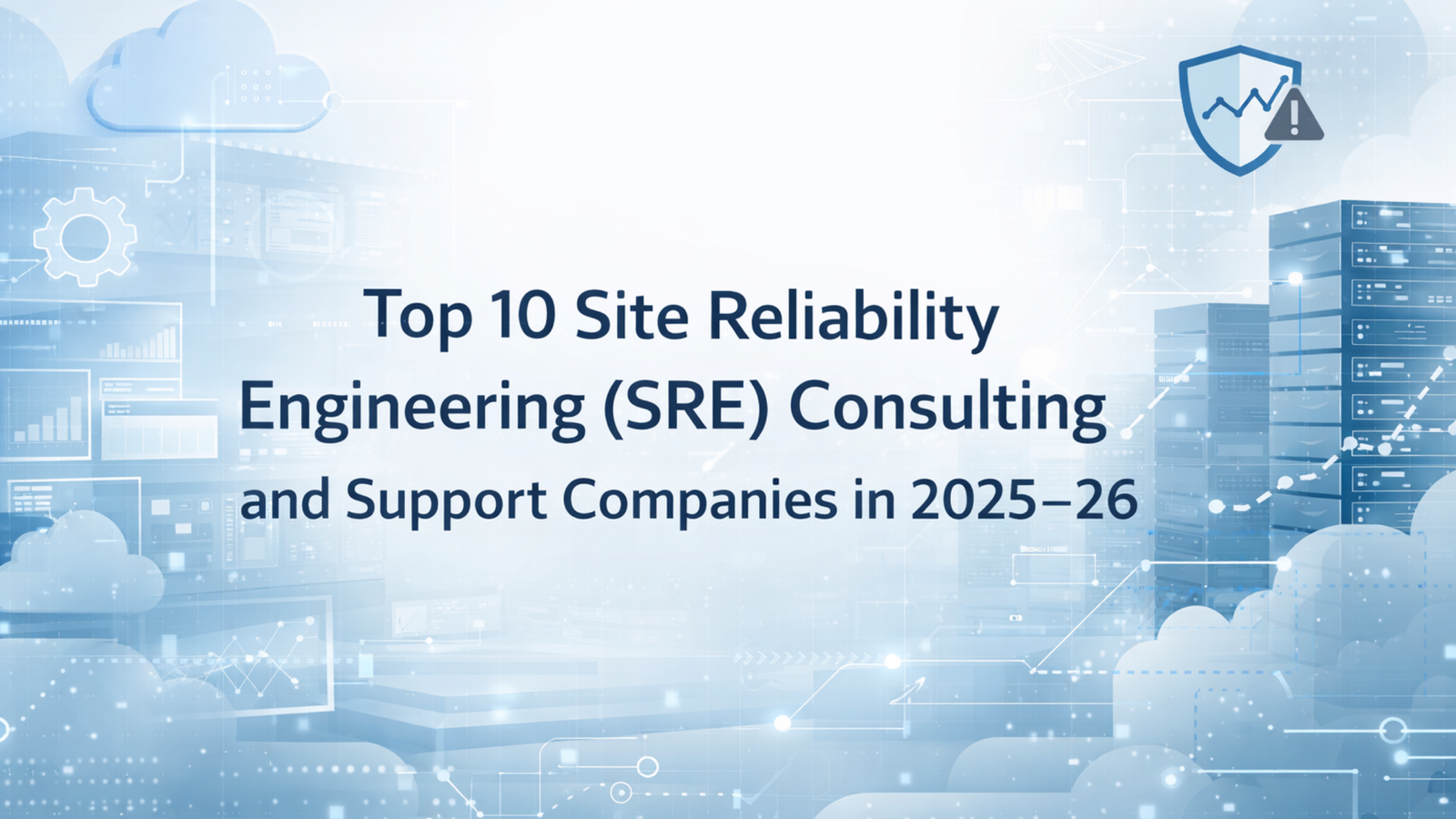Today, the lines between business performance and application performance are fast blurring. When Netflix buffers or a banking app crashes, customers don’t see a technical glitch—they see organizational incompetence.
The cost of such performance failures extends far beyond immediate revenue loss; it holds the potential to erode brand trust, dampen team morale, and hand market share to competitors on a silver platter.
This evolving consumer attitude has catalyzed a strategic shift among visionary CTOs, who increasingly recognize that exceptional performance isn’t achieved through last-minute tuning. It’s methodically engineered from day one.
This is prompting them to partner with performance engineering experts at the very onset of their Software Development Lifecycle (SDLC) to consistently deliver exceptional digital experiences.
Five Reasons Visionary CTOs Partner With Performance Engineering Experts Early in the SDLC
The traditional approach of faster market entry and fixing the issues later in software development has long been both costly and ineffective. These fixes can cost drastically more, with average downtime costing over $300,000 per hour.
Forward-thinking technology leaders are shifting left. They are beginning to approach timely performance engineering as a proactive discipline driving business value. Here are five key factors driving this shift:
- Early Detection of Performance Issues Prevents Missed Deadlines
- Significant Cost Savings by Addressing Issues at the Source
- Strengthened Customer Trust and Enhanced Team Productivity
- Reduced Complexity and Increased Flexibility Across Processes
- Competitive Advantage and Business Growth
Let’s dig deeper into each of these!
1. Early Detection of Performance Issues Prevents Missed Deadlines
In a recent Boston Consulting Group (BCG) survey, nearly half of global C-suite executives revealed that over 30% of their tech projects experienced delays. Some of the reasons cited were a lack of technical expertise (23%), inflexible tech methods (16%), and unforeseen risk and compliance issues (19%).
For these reasons, partnering with performance engineering experts early in the SDLC is crucial for preventing bottlenecks, failures, and unforeseen problems that could derail project deadlines. Here’s why:
Performance Issues
When performance engineers are involved early, they can spot inefficiencies in how the system handles processing, memory, and input/output operations.
Performance engineers identify high-latency processes, suboptimal code execution paths, and inefficient database queries during the design or coding phase. This early intervention ensures that performance issues are resolved before they become larger during testing or production.
Availability Issues
Early detection of availability concerns ensures that the system architecture is resilient and can handle downtimes, crashes, or maintenance without affecting the end-user experience.
By designing fault tolerance, redundancy, and failover mechanisms early on, the development team avoids rushed fixes or emergency patches that often cause deadline slippage.
Scalability Issues
Early involvement in identifying scalability limitations prevents systems from underperforming when demand increases. Performance engineers assess how the system will behave under different loads, ensuring that the infrastructure, data handling, and user concurrency can scale with future growth.
For instance, Asia’s largest payment gateway was struggling with performance issues while expecting a 5x increase in transaction volume. By using the COMP-A-S-S™ platform, they achieved a 500% improvement in performance, eliminated daily server reboots, and cut assessment time in half.

Beyond the immediate need for rework, late-stage Performance-Availability-Scalability (P-A-S) issues can lead to resource mismanagement and project fatigue, leading teams to adopt reactive solutions that may lead to significant issues in the future.
2. Significant Cost Savings by Addressing Issues at the Source
Global 2000 companies face an annual loss of $400 billion due to digital system failures or severe slowdowns in service
Given the high costs associated with P-A-S issues and delayed fixes—significantly more expensive than early interventions—it’s clear why addressing issues as early as possible in the development cycle itself is just crucial.
Performance engineering experts are key players in this strategy. They step in right from the start, reviewing architectures and spotting potential bottlenecks early on. This foresight prevents the need for expensive rework and ensures resources are used efficiently—think of avoiding unnecessary cloud resource over-provisioning.
By catching memory leaks, validating scalability, and addressing other P-A-S issues early, these experts help dodge costly emergency fixes down the line and reduce instances of downtime by as much as 50%.
For instance, a major bank’s operations across 3,000 branches and 10,000 ATMs were suffering from crippling performance and downtime issues. After Avekshaa’s P-A-S-S™ optimization, web server outages were eliminated, response times improved by 50%, and a detailed capacity plan was developed to handle future growth, restoring productivity and user satisfaction.

This proactive approach doesn’t just cut costs; it also minimizes downtime and shields your brand from the fallout of performance slips, safeguarding both bottom line and reputation.
3. Strengthened Customer Trust and Enhanced Team’s Productivity
One of the key consequences of inadequate performance engineering early in SDLC is poorly performing applications.
These sub-optimally engineered applications often exhibit sluggish response times, frequent crashes, and inconsistent behavior, leading to frustrating user experiences that drive users away and increase churn.
Beyond immediate user impact, these issues cascade into operational challenges, forcing teams to lose productivity by diverting precious time and resources toward firefighting production problems.
The most severe consequence, however, is the erosion of customer trust, which drives away not only existing but also other potential customers. The Bank of Ireland’s technical glitch in August 2023 is a fitting example. The glitch allowed customers to withdraw or transfer more money than their account balances, and despite being resolved quickly, it caused significant reputational harm to the bank.
In light of these costly incidents, performance engineers are critical in ensuring applications are built on solid and reliable foundations. Through comprehensive performance testing and architectural optimization, they help prevent system failures and keep operations running smoothly.
This helps organizations deliver consistently reliable, responsive, and secure applications while enabling development teams to focus on innovation rather than troubleshooting.
4. Reduced Complexity and Increased Flexibility Across Processes
In software development, keeping things simple and adaptable is crucial. When systems get too complex, it slows everything down—from fixing bugs to adding new features.
Performance engineering experts tackle these issues head-on by conducting thorough architectural reviews at the start of the SDLC, streamlining processes, and pinpointing potential bottlenecks. This proactive approach doesn’t just smooth out current operations—it prepares systems to respond quickly to seasonal fluctuations in traffic or market shifts.
For instance, a major bank faced crippling performance issues with its Real Time Gross Settlement (RTGS) processes, especially during high-traffic periods. By implementing architectural changes and leveraging parallel processing, the bank saw over 200% improvement in scalability, bringing all processes within SLA-defined limits and resolving compliance issues.

Additionally, this forward-thinking approach simplifies handling significant changes, like cloud migrations, which can be particularly challenging for legacy applications. And you certainly don’t want the same headaches when future advancements come along.
By keeping systems ready to grow with the business, companies avoid costly, last-minute fixes that can result in missed market opportunities. This way, they stay agile and can take advantage of new trends and technologies.
5. Competitive Advantage and Business Growth
Launching software products quickly allows businesses to capture customer attention, generate revenue, and respond to market changes ahead of their competitors, providing a significant edge.
Performance engineering experts play a vital role in this process by identifying and addressing performance, availability, and scalability issues early in the development cycle, which accelerates time-to-market. This also simplifies scaling later and makes it easier for enterprises to manage growing demand.
Moreover, early detection of performance issues helps avoid technical debt, i.e., those shortcuts made to expedite product delivery that can compromise long-term stability. Without timely intervention, this technical debt can result in expensive rework and hinder future updates, ultimately affecting business growth.
The benefits of these strategies translate into concrete business outcomes, including a stronger brand reputation, increased market share, and a sustained competitive advantage.
While understanding the critical importance of early performance engineering is one thing, finding a partner with the right expertise, proven methodologies, and track record of success is another. This is where Avekshaa’s comprehensive performance engineering services stand out.
Must Read: Why CTOs Choose Early Partnerships with Performance Engineers for Smooth App Migrations
Avoid Poor CX and Missed Business Opportunities—Partner with Avekshaa for Performance Engineering
At Avekshaa Technologies, we make sure your applications Perform flawlessly, are always Available, and Scale seamlessly (P-A-S). If you’re looking to build top-notch, reliable apps that deliver great user experiences, Avekshaa is the partner you need.
The secret to a successful app is catching issues early, and that starts with proper diagnosis. That’s why our Center of Excellence for Performance Testing and Engineering (PT&E CoE) is built to spot and fix deep-level Performance, Availability, and Scalability (P-A-S) problems before they blow up into bigger issues.
What sets us apart is our P-A-S-S™ Assurance platform. Unlike tools that only scratch the surface, P-A-S-S™ dives deep into your tech stack to find bottlenecks with over 95% accuracy. Fixing these early doesn’t just prevent headaches; it also speeds up delivery and makes sure your apps can handle the pressure.
Take the example of a major insurance company in India that was struggling with performance issues. Avekshaa’s P-A-S-S™ methodology uncovered the root causes and provided 25 actionable solutions. With a 90% acceptance rate of our recommendations, we helped improve their app’s performance and ensured it ran smoothly.

Industry leaders like Vodafone, Tata Capital, HDFC Bank, and Kotak Life Insurance trust Avekshaa to keep their applications running at their best.
Want to learn more?

Contact the experts at Avekshaa Technologies and find out how we can help with your application performance engineering needs.


